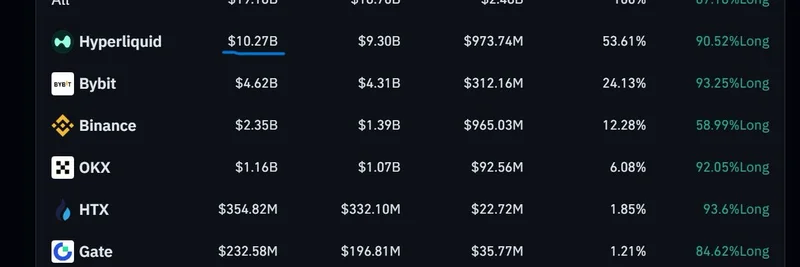In the wild world of crypto, where prices can swing like a pendulum on steroids, reliability is key—especially if you're into meme tokens that thrive on hype and rapid trades. Recently, Hyperliquid, the high-performance blockchain designed for finance, shared some impressive news on X about weathering a storm of market volatility without breaking a sweat. Let's dive into what happened and why it matters for meme token enthusiasts.
The post from Hyperliquid's official account highlighted how their system handled record traffic and volumes during a bout of extreme market swings. "During the recent market volatility, the Hyperliquid blockchain had zero downtime or latency issues despite record traffic and volumes," they stated. Their custom HyperBFT consensus mechanism—think of it as the engine that keeps everything running smoothly in a decentralized way—managed the surge effortlessly. This wasn't just a pat on the back; it was a real-world stress test showing that a fully on-chain financial system can be both decentralized and scalable.
For those new to the lingo, HyperBFT is Hyperliquid's take on Byzantine Fault Tolerance, a fancy way of saying it ensures the network agrees on transactions even if some parts are acting up. And "on-chain" means everything happens directly on the blockchain, without relying on off-chain shortcuts that can introduce risks or centralization.
What makes this particularly exciting for meme token folks? Hyperliquid isn't just for trading; it's built for launching tokens too. Their bio sums it up: "Trade, build apps, and launch tokens on the same hyper-performant chain." In a space where meme tokens can explode overnight, having a platform that doesn't buckle under pressure means you can deploy your next viral coin or trade existing ones without fearing outages. Imagine trying to snag a hot meme token during a pump, only for the exchange to lag—Hyperliquid aims to eliminate that nightmare.
But it wasn't all smooth sailing in the comments. The post sparked a lively discussion, with some users praising the platform while others raised concerns. One reply pointed out issues during the crash: "You closed many people’s positions without their consent and it was apparently 'impossible' to buy when the big crash happened." Others mentioned auto-deleveraging, where the system automatically reduces leveraged positions to prevent insolvency, and ignored stop losses. It's a reminder that even robust systems have mechanisms to protect the overall platform, which can sometimes catch traders off guard.
On the flip side, positive experiences shone through. A user shared, "I confirm the same. I could do the following yesterday when BTC nuked to $100k: Deposit funds into HL, Buy eth at $3.3k, Buy some alts -70% down. All during peak volatility. Most CEXEs were down." CEX stands for Centralized Exchange, like Binance or Coinbase, which often struggle during high volatility—unlike decentralized setups like Hyperliquid.
One standout reply came with a chart showing Hyperliquid accounting for over half of all crypto liquidations during the event, totaling a whopping $10.27 billion out of $19.16 billion across exchanges. Liquidations happen when leveraged positions get wiped out due to price moves, and this volume underscores just how much action was happening on the platform.
This chart from data aggregator sources illustrates Hyperliquid's dominance in handling longs and shorts—positions betting on price rises or falls. With 90.52% longs liquidated, it paints a picture of a market tilt, but more importantly, it shows the platform processed massive volumes without hiccups.
Critics argued about forced closures: "lmao sure, closing people’s shorts cause they got too profitable for the users defo proving that Hyperliquid's decentralized and fully onchain financial system can be robust and scalable." Auto-deleveraging is a feature in perp trading to maintain solvency, but it can feel unfair if you're on the wrong end. Hyperliquid's risk management kicked in as designed, ensuring the platform stayed solvent amid the chaos.
For meme token traders and builders, this event highlights Hyperliquid as a solid choice. Meme tokens often ride waves of volatility, and a chain that can handle spikes without downtime means faster launches and trades. If you're looking to create the next big meme coin, platforms like this offer the tools to do it on-chain, with built-in liquidity and community reach.
In summary, Hyperliquid's performance is a win for the decentralized finance (DeFi) space, proving that on-chain systems can rival or surpass centralized ones in reliability. Whether you're trading memes or building the next viral project, keeping an eye on innovations like this can give you an edge in the ever-evolving crypto landscape. Check out Hyperliquid's site for more on getting started.



